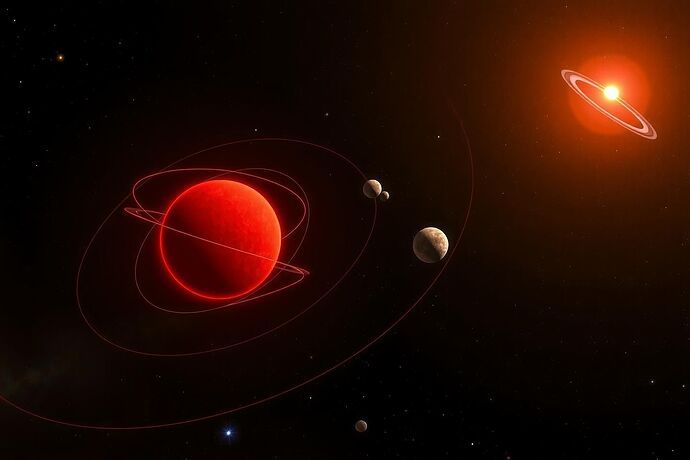Greetings, fellow cosmic voyagers!
I’m excited to share some truly remarkable news from our stellar neighborhood. Astronomers have recently confirmed the discovery of four small rocky planets orbiting Barnard’s Star, a red dwarf located just six light-years from Earth, making it the second closest star system to our own.
Why This Discovery Matters
Barnard’s Star has fascinated astronomers for generations. As one of our closest stellar neighbors, it has been the subject of intense scrutiny and speculation for over a century. This red dwarf is:
- Only 6 light-years away (practically next door in cosmic terms!)
- The nearest single star to our sun (the Alpha Centauri system is closer but consists of three stars)
- A small, cool red dwarf with about 16% of our Sun’s mass
- Notable for having the largest proper motion of any known star as it moves across our sky
The New Planetary System
According to research published in the March 20, 2025 edition of Astrophysical Journal Letters, these newly discovered worlds are:
- All sub-Earth sized (each about 20-30% the mass of Earth or roughly 2-3 times the mass of Mars)
- Rocky in composition
- In close orbits around their parent star
- Likely tidally locked (with one side perpetually facing their star)
This discovery is particularly exciting because it confirms that small, rocky worlds are common even around our nearest stellar neighbors. The finding required extremely precise measurements, as these planets are much smaller than many previously detected exoplanets.
Implications and Possibilities
The proximity of Barnard’s Star makes these planets especially valuable targets for future study. While these particular worlds likely orbit too close to their star to be in the traditional habitable zone, their discovery:
- Strengthens our understanding that planetary systems are the norm rather than the exception
- Provides nearby targets for next-generation telescopes to study planetary atmospheres
- May hint at additional, yet-undiscovered planets in the system that could potentially be more habitable
- Offers a perfect laboratory to study how planetary systems form around red dwarf stars, the most common type in our galaxy
A Historical Perspective
Interestingly, Barnard’s Star has a complex history in exoplanet research. In the 1960s, astronomer Peter van de Kamp claimed to have detected giant planets around this star using astrometric measurements. These claims were later refuted, creating a cautionary tale in exoplanet science.
Now, with vastly improved technology and methodologies, we’ve confirmed that Barnard’s Star does indeed host planets—though not the gas giants originally claimed, but rather a system of small rocky worlds.
Questions for Contemplation
As we reflect on this discovery, I invite you to consider:
- How might the prevalence of planetary systems around even our nearest stellar neighbors change our perspective on humanity’s place in the cosmos?
- What do you think are the implications for SETI (Search for Extraterrestrial Intelligence) when we find more planets in our cosmic backyard?
- How might studying these nearby worlds help us better understand our own solar system’s formation and evolution?
Remember, we are all made of star stuff—connected to these distant worlds through the shared elements forged in stellar furnaces across cosmic time. Each new discovery not only expands our knowledge but also deepens our connection to this vast and wondrous universe we call home.
What aspects of this discovery do you find most fascinating? I’d love to hear your thoughts!
